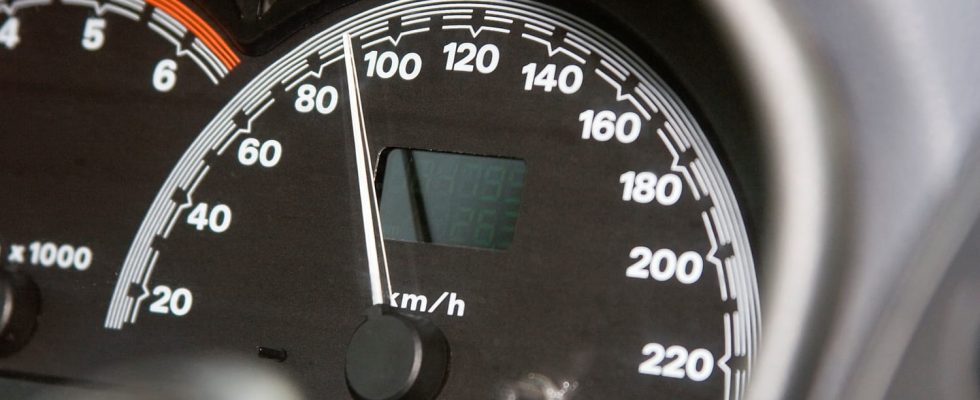The car’s speedometer shows 130 km/h but your GPS navigation app says 120 km/h? Rest assured, there is no technical bug on one side or the other. We explain the reason for this discrepancy.
If you are used to driving with a navigation app on your smartphone like Waze, Google Maps or Coyote to name just a few, you have probably already noticed that something is wrong with the speed calculation. of the vehicle. While the speedometer – needle or digital – of your car tells you a speed of 80 km/h, your GPS app estimates a lower speed – 76 km/h or less. Is this an app bug? Is the car speedometer incorrectly adjusted? Neither. The explanation is quite different.
Motor vehicle manufacturers are subject to an international obligation: the speedometer must under no circumstances underestimate the actual speed of the vehicle. In other words, it cannot say 100 km/h if the vehicle is actually traveling at 101 km/h. Also, manufacturers systematically take a safety margin for speed indicators. Nestled at the level of the wheels or at the output of the gearbox, the measuring device cannot in fact take into account the wear of the tires or their pressure level which can affect the actual speed of the vehicles and lead to an underestimation of the pace. The car’s speedometer therefore tends to overestimate the actual speed of travel by around 5% — which does not prevent it from being reliable.
For its part, the navigation app is based on the GPS signals received from the satellites that the smartphone captures to carry out a very simple calculation: it indicates the speed of movement by dividing the distance traveled between two position readings by time elapsed. It thus provides very precise data, getting closer to reality. At least, when everything is going well.
Indeed, if the GPS signal deteriorates, in town, for example, or when the weather deteriorates significantly, the reliability of the smartphone’s GPS and therefore the speed indications provided, may be called into question. There may also be latency due to the acquisition time of the GPS signal. The on-board meter of your vehicle does not experience this phenomenon, because it is completely autonomous. In this way, when you are driving on a national road, a clear departmental road or a motorway, the navigation app will show you a speed that is true to reality and therefore lower than that of the car’s speedometer. On the other hand, at slower speeds and in dense areas, it is better not to trust it too much and turn your attention to the vehicle’s speedometer before your eyes.
When in doubt, place all your trust in your vehicle’s speedometer. Even if it makes you drive a few kilometers per hour below the authorized limit, it will save you from being flashed by a radar for five kilometers per hour too much (or less) and being fined as you pass by. a fine and loss of points on your driving license.
